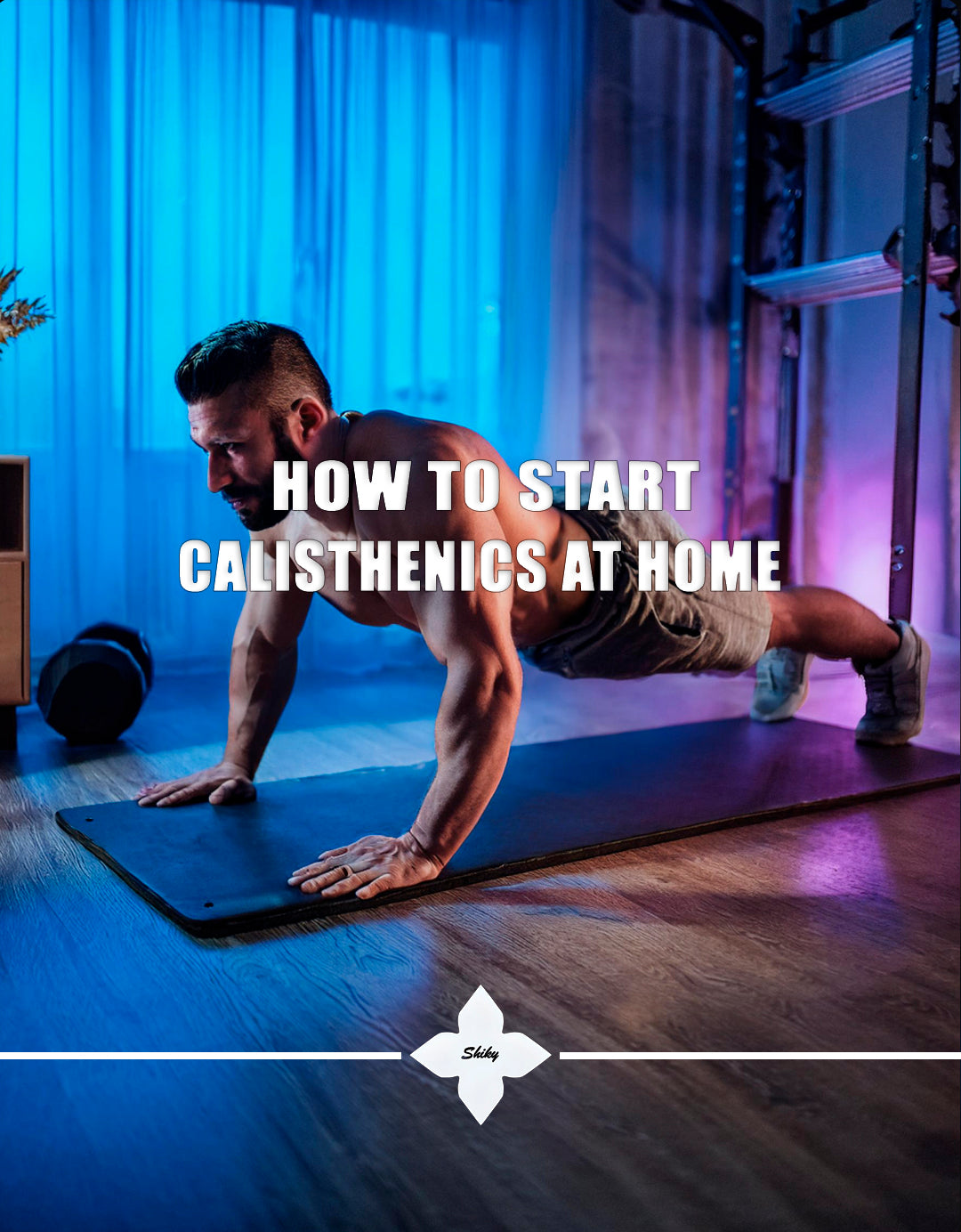
How To Start Calisthenics at Home?
How to Start Calisthenics at Home
Starting calisthenics at home can be one of the best decisions for your fitness journey. It’s cost-effective, requires minimal equipment, and builds real physical strength.First of all you need to decide what you want to achieve: build muscles, increase strength, improve mobility, or just stay active. Clear goals will keep you motivated and guide your training
The biggest advantage of training at home is the fact that you don’t need much—just a small space where you can move freely. Wooden parallettes, like the ones from Shiky can be really helpful for beginners, but of course not crucial at the start.
Master the Basics
Here is the list of exercises that every beginner can start with.
-
Push-ups can help you build upper body and core strength. If normal push-ups seem to be too easy, you can try pike push-ups. This harder version of basic exercise is also a good preparation exercise for mastering handstand.
-
Squats: If you also want to train legs, squats are ideal for strengthening them and improving your mobility. You can add weight to make it harder, if it is too easy without it.
-
Plank is perfect exercise to enhance your core and abs stability, so if you are willing to pull up girls, perhaps this is what you want to focus on ;) Here you should focus on increasing time of holding and adding weight in order to make it more difficult to hold
-
Planche progressions is something you can try if you have solid basic strenght. In order to reduce risks of injury we recommend you to train on parallettes, as planche puts high pressure on wrists. You can start from mastering tuck planche and continue with advanced tuck planche, halflay etc
A simple full-body workout routine can look somehow like this:
-
3-4 sets of 20-30 push-ups with 2 minutes rest between sets
-
3-4 sets of 12-15 squats with 2 minutes rest between sets
-
3-4 sets of 2 minutes planks. Here you can rest for 60-90 seconds between sets. You can adjust repetitions and holding time as you progress.
Consistency beats intensity. Aim for 3-4 sessions per week. Track your progress and increase difficulty over time by adding more reps, sets, or advanced variations.
Also do not forget about warm up and streching after the training to prevent injuries and improve flexibility. You can warm up with light cardio like jogging in place or jumping with rope.
In order to make your trainings plan more precise and independent, watch tutorials and join online communities to gain even more knowledge. Remember that calisthenics is about constant progression.
Start small, be patient, and enjoy the process. Your home can become the ultimate training ground if you stay committed. Let’s get moving!
